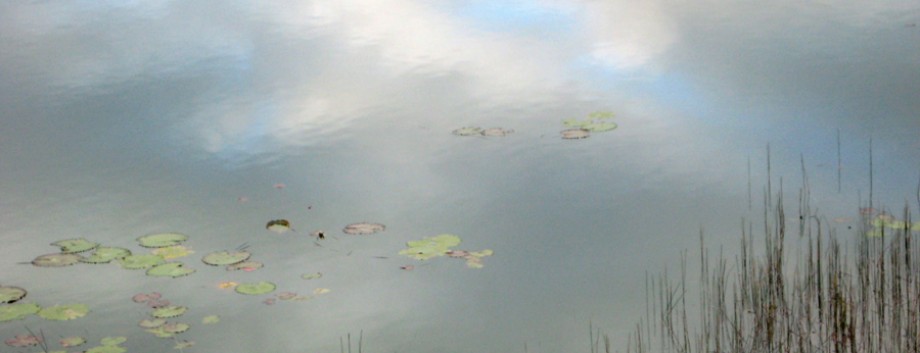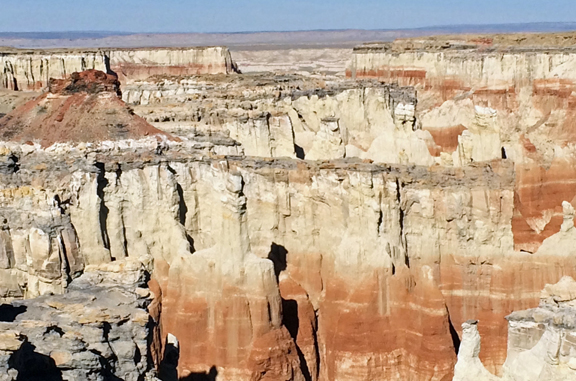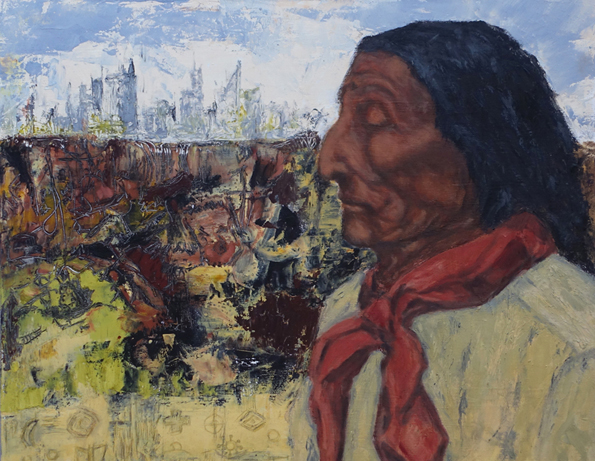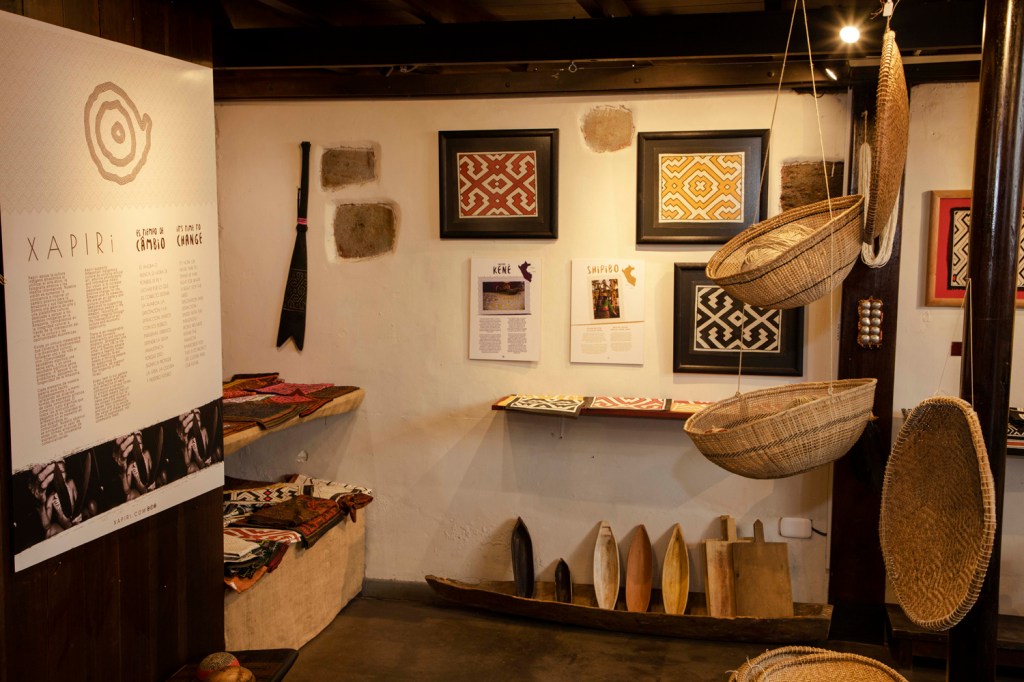First, you need to understand I don’t know what I’m talking about. What I’m going to relate? Much is still a mystery to me. And I ventured into it clueless. For some things, it’s useful to “know.” For the most important things…not. There’s a threat the mind could get involved and do its best to distract, detract and embellish.
In essence, this is a story told in a circle. It began with not-knowing and concludes the same way⏤if as yet it is complete. I didn’t realize it was a story…that one thing would relate itself to another. I didn’t put two and two together…except hints here and there long down the road looking back. It’s simply that I was drawn into it, and if I ignored direction then it became a repetitive command that increased in intensity until I paid attention. And yet the outcome had little to do with me.
I want to make a couple of points to frame what I’m about to share. About eighteen months ago, I discovered Peter Kingsley’s body of work. I was scrolling through social media when, of all places, a quote from one of his books popped out to me as though it lifted itself off the very screen and thrust itself in front of my eyes. I read it over and over. There was residency beyond the words that settled and became solid. This became the start of my current exploration when it could have been overlooked, a flickering interest. Instead, it added depth to my spiritual inquiry.
Mystic, impeccable scholar, Kingsley’s lifelong mission is to bring the origins of Western spirituality back to life and to point to all the ways Reality has been purposefully misconstrued, well hidden. He warns that most will pass the opportunity by and rather remain lost in forgetting, tethered to the illusion we’re presented with. His books are not easy to read. I found them quite dense. When I finally realized the teachings are actually incantations, the magic of them administered in varying ways, I unwrinkled my brow and let the words wash over me instead. I was then reminded of a time years ago when the teaching of Intent came into my life. I wrestled with the concept until finally, Intent won over. In that shift, my intellect let go. The core energy of the heart let itself be known…no concept but a Presence.
Some things Kingsley wrote were familiar. I had written about them myself over the years and taught in similar ways. Not that I was shaky in my own understanding of Truth but felt validated. Going out on a limb to express such things is a choice to swim against the tide. Companionship is always welcome.
Here’s a quote from his book Reality. I’m providing it because it has everything do to with the circle, a symbol of containment and completion, as I mentioned earlier. Let yourself sink into his words. They took me to places I already knew.
“…the system presented by Parmenides over two thousand years ago, at the dawn of our civilization, is so extraordinary. For it offers us completeness first: not later or at the end, not at some distant point in the future.
The completion, the perfection, comes right at the start. And that’s how things have to be, because unless the end were present at the beginning we would never be able to get there.”
The next point has to do with psychologist-researcher Julian Jaynes. In the early 1990s, I read his 1977 book The Origins of Consciousness in the Breakdown of the Bicameral Mind. I was fascinated. But at the time I didn’t see myself in it, probably because it wasn’t until a few years later that the natural phenomena Jaynes described, and others he does not, started occurring much more frequently in different contexts. About eight months ago, I was told to pick up the book, dusty on my shelves, again. And so, Jaynes’ work joined Kingsley’s in my exploration because I found multiple places to perch…and also produced a lot of questions from my own experiences.
This is an excerpt of an overview from Marcel Kuijsten, founder of the Julian Jaynes Society:
“Jaynes asserts that consciousness did not arise far back in human evolution but is a learned process based on metaphorical language. Prior to the development of consciousness, Jaynes argues humans operated under a previous mentality he called the bicameral (‘two-chambered’) mind. In the place of an internal dialogue, bicameral people experienced auditory hallucinations directing their actions, similar to the command hallucinations experienced by many people who hear voices today.
The neurological model for the bicameral mind has now been confirmed by dozens of brain imaging studies.”
Note: I do take issue with the word “hallucination” used in the overview of Jaynes’ theory. First, the word is connected with mental illness and psychedelics by mental health professionals, creating stigma. Many perfectly normal people are voice-hearers. I’m one of them. Many feel unsafe and/or anxious about it. Therefore, it remains underground, a well-kept secret, creating further anxiety. I’m telling this story as it happened to me and seek to normalize such natural phenomena.
What follows is informed by the works of Kingsley and Jaynes that deepened my own understanding perhaps as to the how. But then why tells a tale of its own⏤decades-long⏤for which I have no explanation regarding my own involvement. Also know: I never had any clue, at the moment, as to the point or potential evolution of the directions I was given. And I made an immediate choice to follow them. I was completely aligned with the actions.
I’m still in the process of pinpointing exactly how the guidance comes. What I can discern now is the auditory component, which is a matter-of-fact voice, not my own, that typically emanates from outside my head in my upper left field. It could happen as I’m going about my day, sometimes during meditation. Moreover, there’s a strong kinesthetic component, a solid “rightness” and pulling quality that backs it up. I call it “following the energy.” On rare occasions, a visual image can appear to me during meditation. None of these instances are everyday occurrences. It’s more like I’m prompted to take certain actions in order for other things to unfold, maybe even years apart, and then another will come as the next step. But I always know when I’m on track and when I get sidelined and need to self-correct.
We were in the Moenkopi home of Charlene and Harold Joseph, traditional Hopi Wisdom Keepers, also our hosts for my spiritual travel program on Hopi Land. We were sitting in a circle, and Harold had begun to speak about his time as a sponsored guest on my Maya program in southern Mexico. I interrupted him, which I normally would not do, and said perhaps it would be useful to those in the group, who hadn’t traveled with me before, to provide some context to frame his telling. It was like someone else entered the room and had taken over, needing to give voice to something only ever been told in a segmented way, and I began to speak. And while I shared the high points, a number of things were left out, and the threads of one to another were connected intuitively by the listeners. What came arose organically, having specifically to do with Hopi.

Testimony. ©2015 Carla Woody
In the late 1980s, I began to have a vision during my daily meditations. I recognized it was a place I was supposed to be, far from Ohio where I was then living, but I had no idea where. It had mountains and pine trees. I was there. I could smell the forest. I felt completely at home. The vision would return periodically, getting stronger as the years went on until it became a yearning. In 1996 I moved to Utah but knew that wasn’t it, more like a step along the way.
But a couple of years later, my then-partner and I visited friends outside Prescott, Arizona. It was clear to me I’d arrived, and it only took me a few months to make the move and begin to settle in. Curiously, once I was there, I knew I was supposed to work with Native people in the area. I didn’t know any then and wouldn’t have approached them anyway. That would have been ludicrous. I began to hold meditation circles, spiritual retreats, and classes. A small local community started to grow up around my work. Knowing I’d been going to Peru and studying Andean mysticism since 1994 with spiritual teacher Américo Yábar and Q’ero mystics, some of them asked if I’d take them. That was the start of my spiritual travel programs, the first in 2000. I fell into it.
It was 2006 after a despacho prayer ceremony at a sacred lake outside Cusco. One of the Q’ero paq’os* looked up at the sky and pointed. Others got excited. A condor and an eagle were flying together. At the time I had never heard of the Eagle and Condor Prophecy until much later. But within a few days of my return home, while driving, a voice came: You need to take Hopi people with you on your programs south.
I still didn’t know any Native people in the area, much less Hopi. But synchronicities quickly happened, and in 2007 a Hopi father and 17-year-old son joined us on our journey to Peru. The same year, I founded Kenosis Spirit Keepers, the nonprofit extension of its mother organization Kenosis, to fund the sponsorships and other collaborative projects with the Indigenous peoples we serve. That’s when the story began to gain momentum.
The next year Harold was our sponsored guest. He consulted with his Kikmongwi, the traditional chief of his home village Shungopavi, who asked him to observe what he saw and accomplish other things. During our journey Harold went off by himself periodically, saying nothing when he’d rejoin the group. He remained silent about all of this and complicating factors. It was probably a year before I learned through Harold that Hopi oral history told of their migration up from South America through Central America and Mexico to where they live today. I had no idea. I also hadn’t known it was taboo for them to return to migration paths due to the bad things that had occurred causing them to leave. Consequently, there were certain things asked of Harold by his Kikmongwi in order to clear the way and open the path southward for other Hopis. That’s why he went off on his own. Nor did I know why Harold had been so thrilled to see the reed boats with serpent heads at Uros, the floating reed islands on Lake Titicaca. To the point, he bought a small mobile containing miniature boats to take home and show Charlene’s father, the last great oral historian of the Hopi Tribe, who teared up at his find.
By that time, I’d started sponsoring a Maya program that had created itself organically, allowing me to take people to the highlands and lowlands of Chiapas where I’d been returning annually since 1994. Sponsored Hopis, usually chosen by their Kikmongwi, joined us in both Peru and Mexico, meeting their relations and sharing traditions in both places. My heart lifted each time they noted stories and other indicators that let them know they’d passed through those regions we traversed and sat in the ceremony.
About 2011, I received another missal. This time I was to go to Bolivia where I’d never been. No details whatsoever. I’d suggested to Américo, with whom I’d been working all those years, that we could extend the journey to the Bolivian side of Lake Titicaca, but he wouldn’t go for it. Soon afterward we parted ways. In 2014, I invited two in the group I sponsored that year to go with me to Bolivia after that Peru journey ended, a scouting expedition. I managed to find guides who were very helpful.
Lake Titicaca is a sacred place and the Bolivian side provides entrance to the country. A truly remarkable thing happened in the middle of the lake on our way from the Island of the Sun⏤the location of the ancient mystery school for Inka priests⏤and the Island of the Moon⏤the site of the mystery school for Inka priestesses. Our Quechua and Aymara guides and the three of us had created a despacho on the boat. As the ceremony closed, the despacho bundle wrapped, and one of the guides held it out to me to make the offering to the lake. As we were gliding toward the Island of the Moon, I launched our offering into waves left by the boat. An extraordinary thing happened that’s a challenge to convey. Tremendous energy surged from the lake and devoured the bundle. Astounded isn’t adequate to describe our state. I had no doubt permission had been granted to enter and the way was open for the following year.
In 2015, the journey began in Bolivia and was meant to culminate in Cusco, closely replicating the initiation journey of the first Inka couple Manco Capac and Mama Ocllo. Directed by their father-god Viracocha, they sought a holiest place to build the city⏤a place of the sun and the navel of the world. Sponsorships for this program included Q’ero paq’os and Suhongva Marvin Lalo from Hopi’s First Mesa.
“Our first stop was Tiwanku, said to be the Creation Place where Manco Capac and Mama Ocllo first emerged. Finally pulling ourselves away, in the last half hour before closing we ventured over to an adjacent site. Puma Punku may be the biggest mystery of all. Some conjecture it may have been a docking point, as thousands of years ago Lake Titicaca also covered this area. Now what was left were huge toppled stone slabs and much smaller structures fashioned with extraordinary precision…seemingly impossible for those times. It cannot be explained to this day.
And it was here that Marvin⏤who had traveled south all the way from Hopi Land on a mission for signs that his people had passed this way⏤found the Hopi migration petroglyph. The one that was known to point the way for his ancestors. The one that pointed north…Marvin zeroed in on a symbol he knew to be his people’s…and his hair was on fire.”
⏤Excerpted from A Hopi Discovery in Bolivia
What does this mean exactly? Coupled with Harold’s 2008 trip with us on the Peruvian side of Lake Titicaca where he saw the reed boat with a serpent head he knew from Hopi oral history…and the presence of the Hopi migration symbol at Puma Punka, how do you explain recognition of these artifacts if the Hopi ancestors had not been there?
The following year I repeated the journey from the previous year. The Kikmongwi sent his senior advisor Radford Quamahongnewa of Hotevilla whose mission was to validate what Marvin had seen in 2015. While we were in Puma Punku, our guide spoke of a great city that once existed in that region, now lost, and the great flood that took it. Perhaps not so strangely this, too, was part of Hopi oral history.
When telling this story I was transported back to the times I spoke of. Once I’d completed my recounting, tracing its significant threads, closing the loop of the circle, there was silence. It hung together in the air, an invisible entity…and I was overwhelmed. I was shown the whole of something I hadn’t quite realized. When you follow something you know…along some unknown trajectory derived from prompting by an unseen advisor…and it comes to some kind of fruition in a way you couldn’t have imagined…that instills elements for which I have no words or explanation. I will let it rest here.
*Paq’o is a Quechua word with no direct translation, the closest being a cross between shaman and mystic in the Andean tradition.
This essay was first published in Illuminations Publication on Medium in April 2023.
























